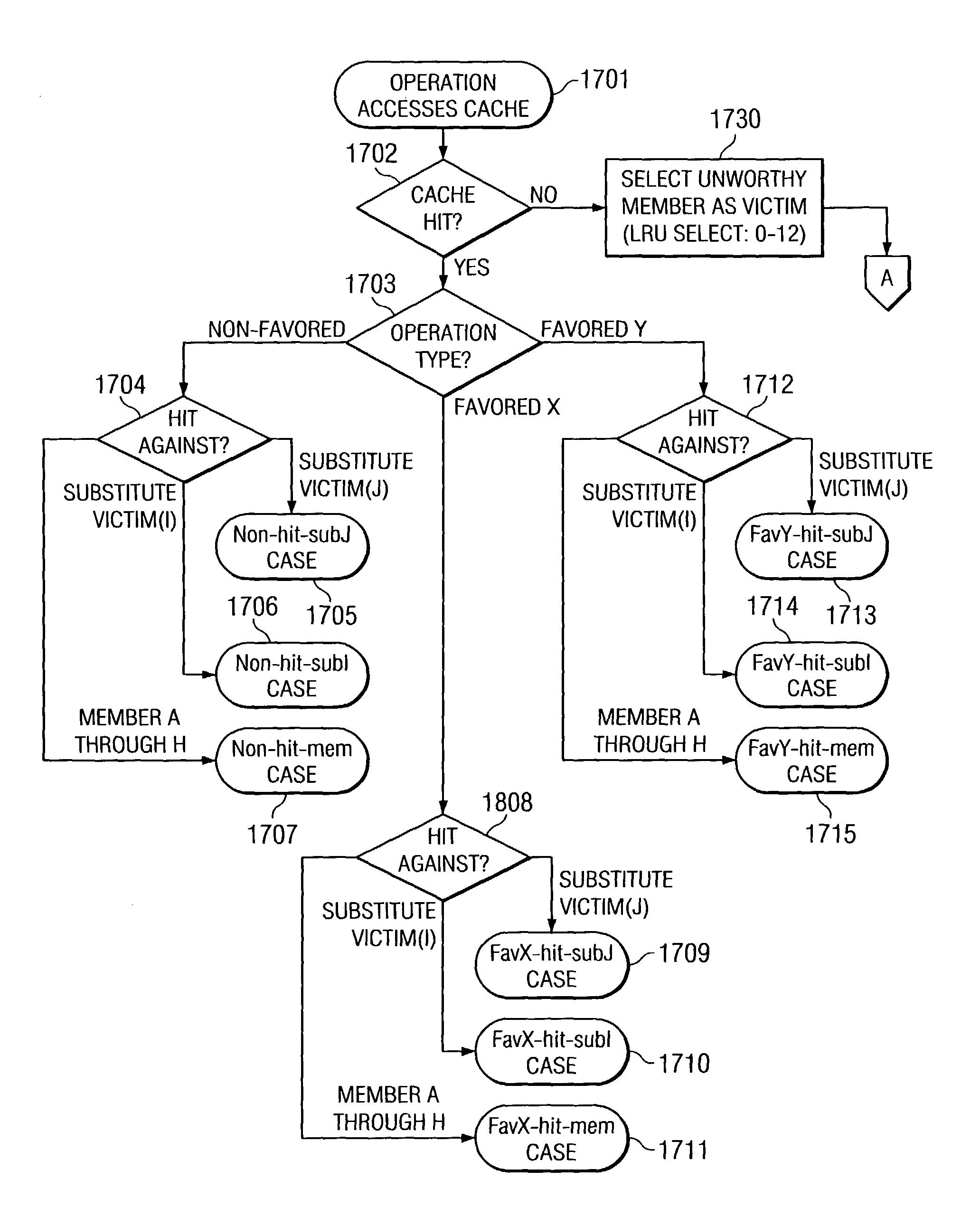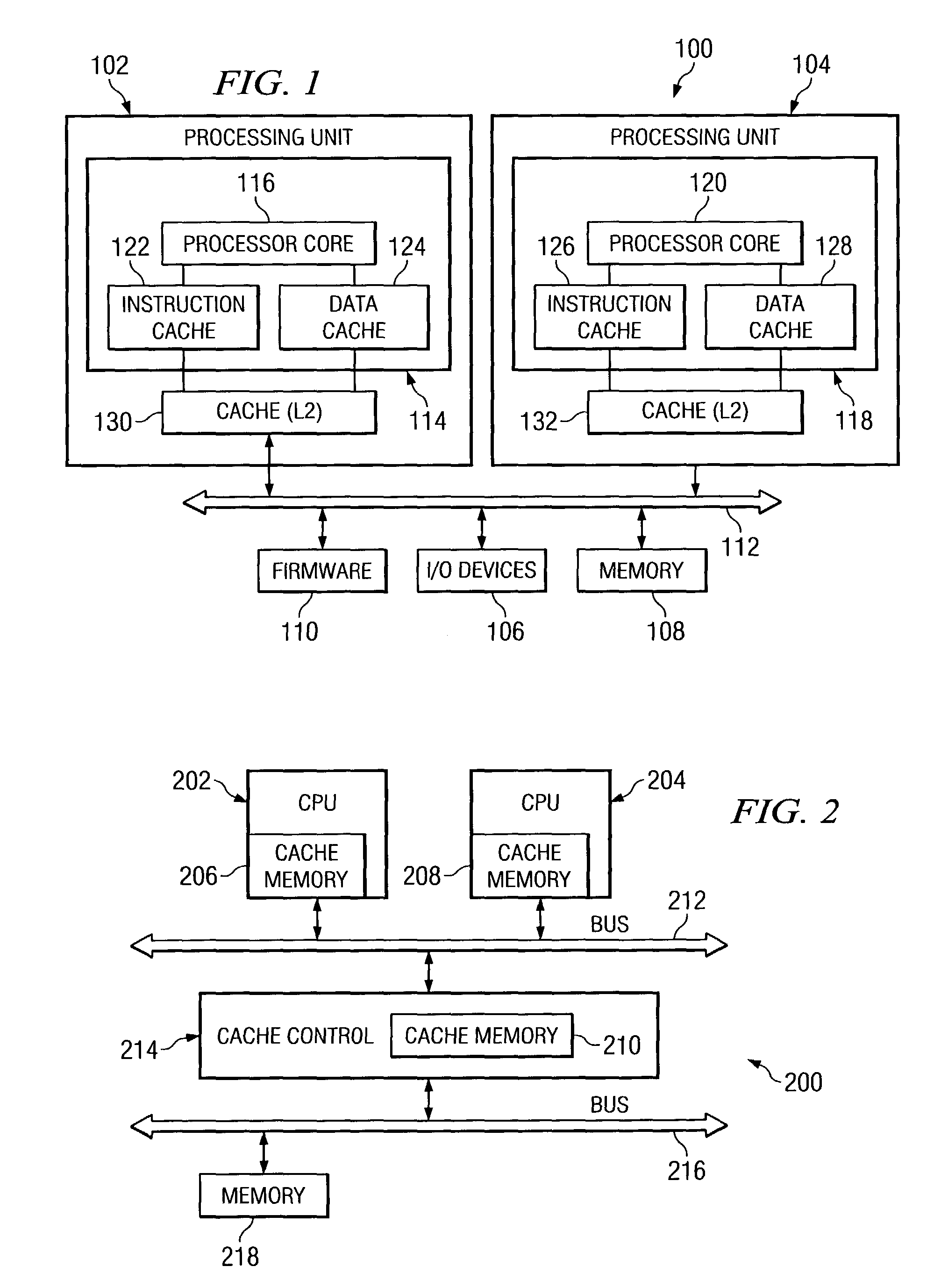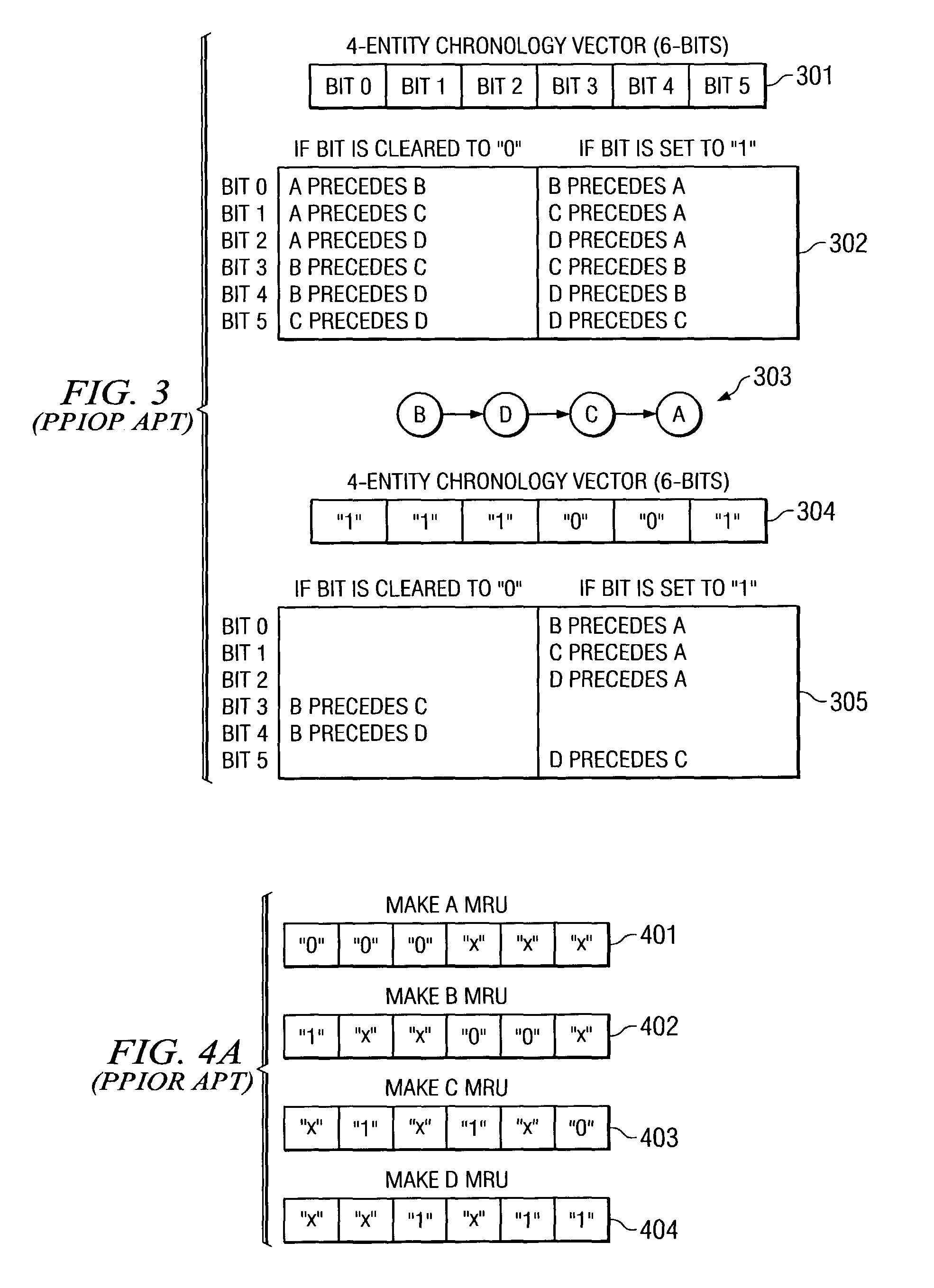Cache allocation mechanism for saving multiple elected unworthy members via substitute victimization and imputed worthiness of multiple substitute victim members
a cache allocation and victimization technology, applied in the field of data processing system, can solve the problems of unoptimized processing speed, complicated behavior of lru replacement policy in multi-level cache hierarchies, and the inability of main memory to keep up with the increasing speed of cpu
- Summary
- Abstract
- Description
- Claims
- Application Information
AI Technical Summary
Problems solved by technology
Method used
Image
Examples
Embodiment Construction
[0051]With reference now to the figures and in particular with reference to FIG. 1, a block diagram of a data processing system is depicted in which a preferred embodiment of the present invention may be implemented. As illustrated, data processing system 100 is an example of a conventional multi-processor computer system. Data processing system 100 has several processing units, two of which, processing unit 102 and processing unit 104 are depicted. These processing units are connected to various peripheral devices, including input / output (I / O) devices 106 used to communicate with a user, memory 108 used by the processing units to carry out program instructions, and firmware 110 whose primary purpose is to seek out and load an operating system from one of the peripherals whenever the computer is first turned on. I / O devices 106 may take various forms, such as a display monitor, keyboard, and permanent storage device.
[0052]Processing units 102 and 104 communicate with the peripheral ...
PUM
 Login to View More
Login to View More Abstract
Description
Claims
Application Information
 Login to View More
Login to View More - R&D
- Intellectual Property
- Life Sciences
- Materials
- Tech Scout
- Unparalleled Data Quality
- Higher Quality Content
- 60% Fewer Hallucinations
Browse by: Latest US Patents, China's latest patents, Technical Efficacy Thesaurus, Application Domain, Technology Topic, Popular Technical Reports.
© 2025 PatSnap. All rights reserved.Legal|Privacy policy|Modern Slavery Act Transparency Statement|Sitemap|About US| Contact US: help@patsnap.com



